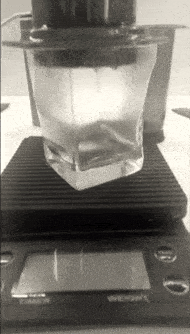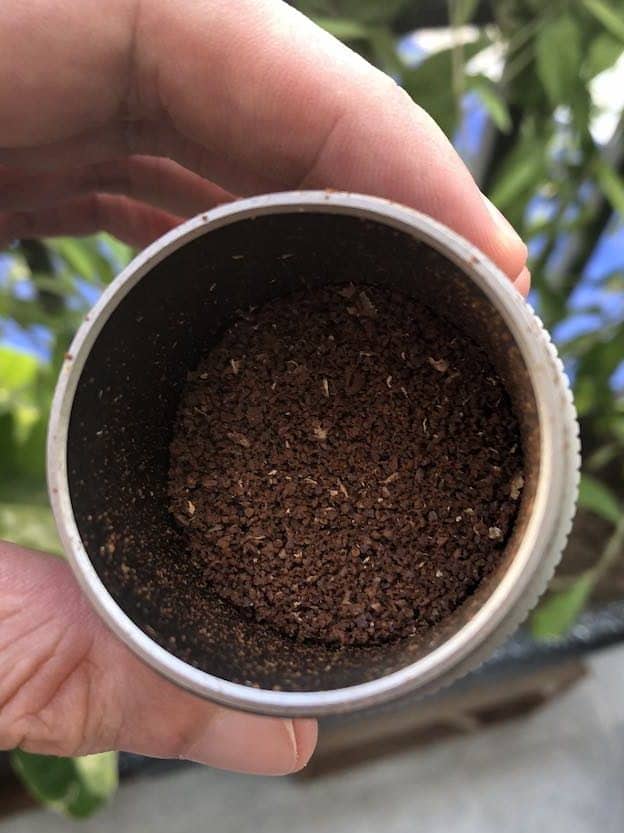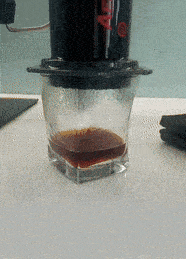Making good coffee with an Aeropress is usually pretty easy but sometimes they can be a bit leaky which doesn’t seem like a good thing. Why is your Aeropress leaking and how can you fix this?
Some water flowing through an Aeropress during brewing is normal because gravity pulls water through. Too much dripping can be caused by an incorrectly placed filter or filter lid. Putting the plunger in during the steep, using the inverted method or a Fellow Prismo completely gets rid of leakage.
Below you can find out the details of why these things cause too much water to drip through and how to fix it. There are also a few more reasons why an Aeropress could leak.
Contents
Why Is Your Aeropress Leaking?
Here are a few of the main reasons why an Aeropress leaks.

Gravity
Some dribbling from the Aeropress is normal. Once you pour the water on the grounds, there is pressure on the filter and the grounds which pushes through some water. This is normal and to be expected.
The further you fill the chamber, the more pressure there is on the filter and the faster the water will drip through. If you fill the chamber to number 4, it’s normal for the level to drop a little below number 3 during the steep time.
Flush Filter
Sometimes the paper filter isn’t perfectly flush against the filter cap. This can create gaps where the water can easily flow through. This means there is no resistance provided by the filter since the water can just go around it.
Also, wetting the filter in the lid before attaching the filter lid to the Aeropress can help you get the filter flush to the lid. Making it wet means less paper taste but it’s also easier to see any air gaps and to let the filter stick to the lid.
Bloom

Doing a bloom period is good for pretty much any type of brew method. Blooming the grounds basically means you pour enough water on the grounds to just make them wet but not more (usually 2x the weight of the grounds). This helps with the strength and taste of the coffee but also lets the grounds swell up which means the gaps between the particles are smaller.
The swollen grounds mean they provide more resistance to the water and less will flow through.
Not doing a bloom means you pour the water on top of the grounds but since the grounds aren’t wet yet, the water can flow through much easier.
Grind Size
The size of the coffee particles has an impact on how fast an Aeropress leaks. The coarser the coffee particles, the bigger the gaps between them. That means the water can more easily flow through the gaps than really pass through the grounds. It also means more water doesn’t touch the coffee grounds and you get weaker coffee.
If the water has bigger gaps to flow through, that means there is less resistance and the water can flow through faster. This leads to more leaks.
For an Aeropress, the correct grind size is medium-fine. This is finer than for a pour-over but a bit coarser than for espresso, comparable to for a moka pot. The coffee particles should be around 0.5 mm in diameter.
You can adjust the grind size a little bit but not all that much. Going much finer might slow down the leaking but, it will also greatly impact the taste of the coffee. Going finer will likely result in much more bitterness. Of course, if your grounds are too coarse now, going finer will improve it.
But, if the grind size is in the right ballpark already, there are much better ways to stop excessive leaking from an Aeropress.

Filter Cap
Make sure the water is actually leaking through the filter and not past it. The filter cap can sometimes not be secured tightly which allows water past it. That way it doesn’t even pass through the coffee grounds which means you just get water in your cup.
That’s no good and it’s easy to do right. When twisting on the filter cap, you should feel enough resistance that you can’t twist it further.
How To Fix a Leaking Aeropress
Here are some fixes you can try to make your Aeropress leak slower or even completely stop it.
- Get The Filter in Place: First, make sure your paper filter is flush in the filter cap. Make it wet first and then make sure there are no gaps and/or folds in the filter and all the parts are stuck to to cap.
- Secure The Filter Cap: When the paper is in place and flush, twist the cap into place. Twist until you feel a little click. That means the cap is secured.
- Do a Bloom: Before filling up the whole brew chamber with water, pour a little water on the grounds and stir so all the grounds get wet. Then wait about 30 seconds before pouring the rest of the water.
- Check The Grind Size: Check if the used grind size is medium-fine. It should be finer than for normal filter coffee but a little less fine than for espresso. However, if the taste is good now, don’t change the grind size but use one of the solutions below to reduce the leakage.
- Put The Plunger In: After pouring the water into the brew chamber, insert the plunger and leave it on top. A little bit more will leak out but then the seal on the plunger will stop the flow by creating a low pressure area above the water that counteracts the gravity.

- Use The Inverted Method: To stop your Aeropress from leaking completely, use the inverted method. Basically, it means you brew upside down and turn it around before pushing the plunger. The downside of this method is that there is a chance of making a big mess.
- Use a Fellow Prismo: Another option to completely stop leaking is to use a Fellow Prismo. This is a replacement filter cap with a pressure valve. The valve only opens when pushing down on the plunger so there is no way any coffee can get through before that time. However, it is also designed to brew more espresso-like coffee so the taste and texture will be different.

